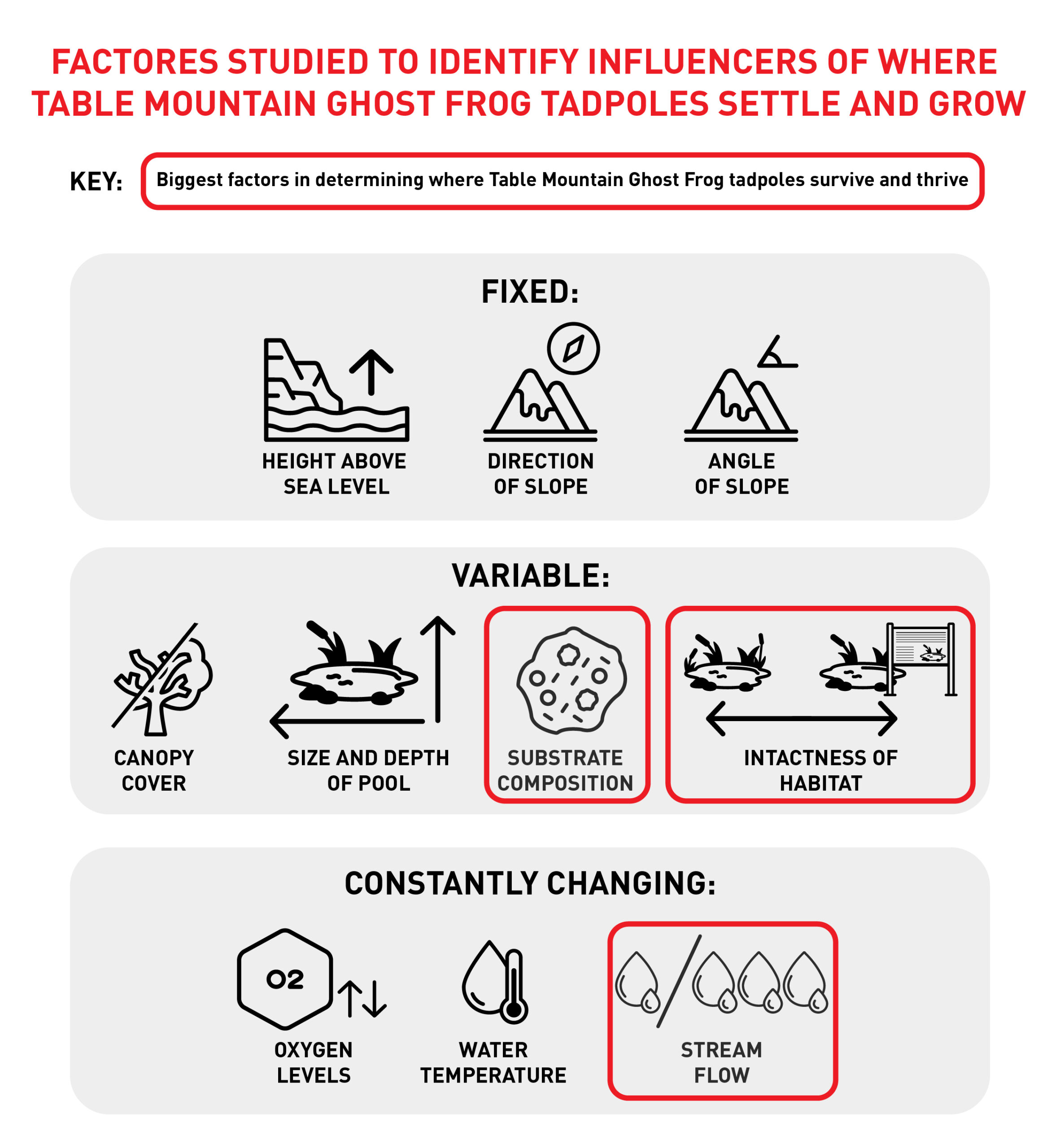Science Snippet:
Ghostly Decline: Unveiling Tadpole Trends in Table Mountain’s Critically Endangered Frog
By Erin Adams and Dr Lizanne Roxburgh

Amphibians, which include frogs, toads and salamanders, are one of the most threatened animal groups worldwide, with just under 50% of species nearing extinction. The Table Mountain Ghost Frog (TMGF) is no exception. It is a Critically Endangered frog, with very specific habitat requirements and is restricted to the streams and pools on Table Mountain in Cape Town. While loss of habitat is known to be the primary cause of TMGF declines, information linking fine-scale drivers of declines to specific, localised threats were lacking. Therefore, in a recent study co-authored by EWT scientists* the fine-scale factors influencing where TMGF tadpoles settle and grow were studied.
For three years, the scientists studied multiple pools containing Table Mountain Ghost Frog tadpoles. During this time, they compared pools and recorded fixed features that won’t change, such as height above sea level, the direction of the slope and the angle of the slope. Features that could change depending on the season, such as canopy cover, size and depth of the pool, substrate composition and an index of how intact the habitat is, were also measured. Finally, factors that are constantly changing, such as the amount of oxygen present in the pool, water temperature, flow and the weather were recorded at each visit.

The scientists found that substrate composition of the pools (whether the bottom of the pools had silt, sand or rocks), was the biggest factor in determining where Table Mountain Ghost Frog tadpoles survive and thrive. Pools with more silt were far less likely to contain tadpoles compared to those with less silt. They also found that areas with high foot traffic, such as hiking trails across streams, promote erosion and increase silt and sand in the pools, which changes the physical structure of the stream. Another big threat to the tadpoles’ survival is the reduction of stream flow, which reduces the stream’s ability to flush sediments such as silt and sand downstream, increasing sedimentation and causing loss of tadpole habitat. Stream flow is negatively impacted by the presence of dams and weirs as well as by dense stands of invasive vegetation, which traps the water.
In order to conserve the habitat integrity of these, and other, aquatic species on Table Mountain, the authors recommend that boardwalks be constructed on the hiking trails that cross streams, to reduce sedimentation in the pools. Invasive plant species should also be removed. And weirs should be opened in drier parts of the year, especially in the late summer to allow the first wet season rains to naturally fill the streams.
*Weeber, J., Altwegg, R., Tarrant, J., & Tolley, K. A. (2023). Fine-scale drivers of extinction risk: tadpole occupancy dynamics of the Table Mountain Ghost Frog (Heleophryne rosei). African Zoology, 58(3-4), 106-119. https://doi.org/10.1080/15627020.2023.2282448
